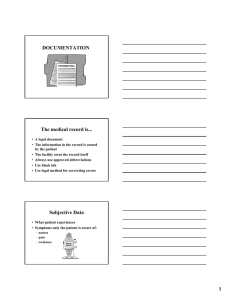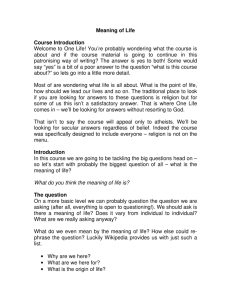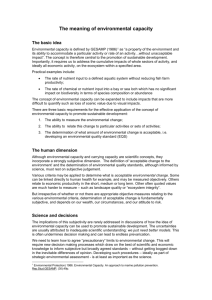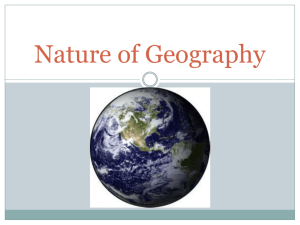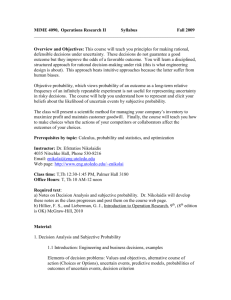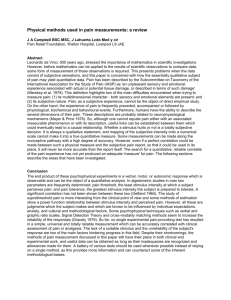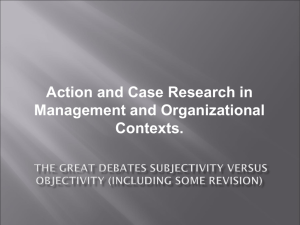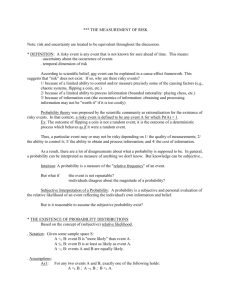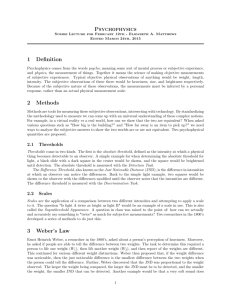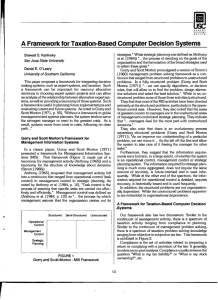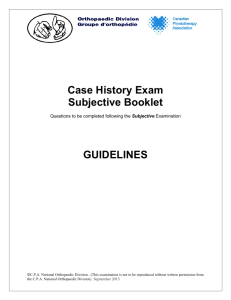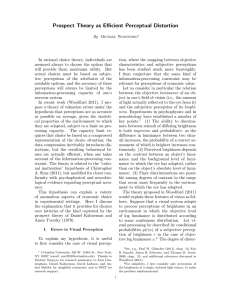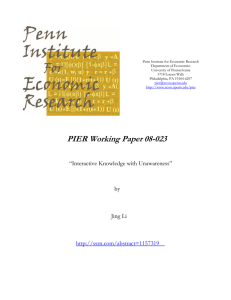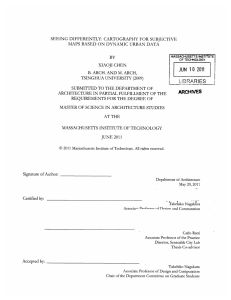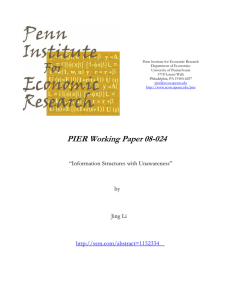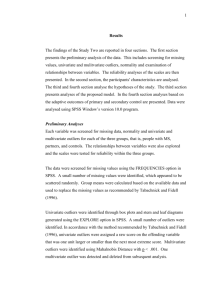Thinking Regions - Crescent School
advertisement
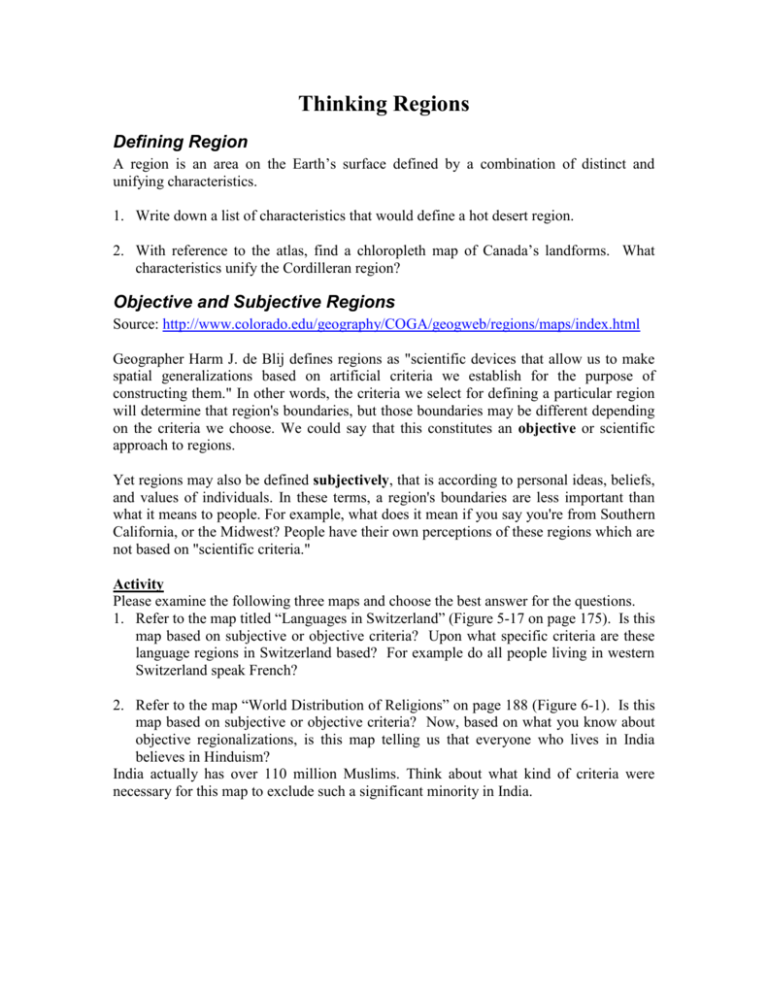
Thinking Regions Defining Region A region is an area on the Earth’s surface defined by a combination of distinct and unifying characteristics. 1. Write down a list of characteristics that would define a hot desert region. 2. With reference to the atlas, find a chloropleth map of Canada’s landforms. What characteristics unify the Cordilleran region? Objective and Subjective Regions Source: http://www.colorado.edu/geography/COGA/geogweb/regions/maps/index.html Geographer Harm J. de Blij defines regions as "scientific devices that allow us to make spatial generalizations based on artificial criteria we establish for the purpose of constructing them." In other words, the criteria we select for defining a particular region will determine that region's boundaries, but those boundaries may be different depending on the criteria we choose. We could say that this constitutes an objective or scientific approach to regions. Yet regions may also be defined subjectively, that is according to personal ideas, beliefs, and values of individuals. In these terms, a region's boundaries are less important than what it means to people. For example, what does it mean if you say you're from Southern California, or the Midwest? People have their own perceptions of these regions which are not based on "scientific criteria." Activity Please examine the following three maps and choose the best answer for the questions. 1. Refer to the map titled “Languages in Switzerland” (Figure 5-17 on page 175). Is this map based on subjective or objective criteria? Upon what specific criteria are these language regions in Switzerland based? For example do all people living in western Switzerland speak French? 2. Refer to the map “World Distribution of Religions” on page 188 (Figure 6-1). Is this map based on subjective or objective criteria? Now, based on what you know about objective regionalizations, is this map telling us that everyone who lives in India believes in Hinduism? India actually has over 110 million Muslims. Think about what kind of criteria were necessary for this map to exclude such a significant minority in India. 3. Refer to the map below. Is this map based on subjective or objective criteria? It appears likely that the cartographer simply constructed the boundaries based upon his/her own subjective interpretation of a number of different features of these places. But since there does not appear to be any set criteria established for selecting these regions, opinions may vary greatly as to their "accuracy." For example, take another look at the map above. A person living in Springfield, Missouri may not think of herself as living in "The South," yet that's where this map places her. Another person living in Boston, Massachusetts may think of himself as a New Englander, rather than a member of the "Continental Core" region, as indicated on the map. The point is that regions like "The South," "New England," and "The Southwest" are subjective regions. They're part of people's identity, and thus cannot really be mapped according to any "scientific" criteria like the languages map. 2 Types of Regions- Pages 20 - 23 Formal Regions 1. What synonyms are used to describe a formal region? 2. Name 3 formal regions. 3. What is the problem with identifying formal regions? Functional Regions 1. Define the term functional region. 2. What is another name for a functional region? 3. On a map of Canada illustrate the functional region for CITY TV. Vernacular Regions 1. What is a perceptual region? 2. Draw a mental map of the city of Toronto. Compare your mental map with that of a fellow student. What significant similarities and differences exist between your maps? 3. Define "The North" as a Vernacular region. 3 The Influence of Culture on Regions- Pages 24 - 26 1. Briefly discuss how culture impacts regions. 2. What is meant by “cultural ecology”? 3. Give evidence to support the theory of environmental determinism. Use an example to illustrate your answer. 4. Support the theory of possibilism with evidence. Use an example to illustrate your answer. 4

